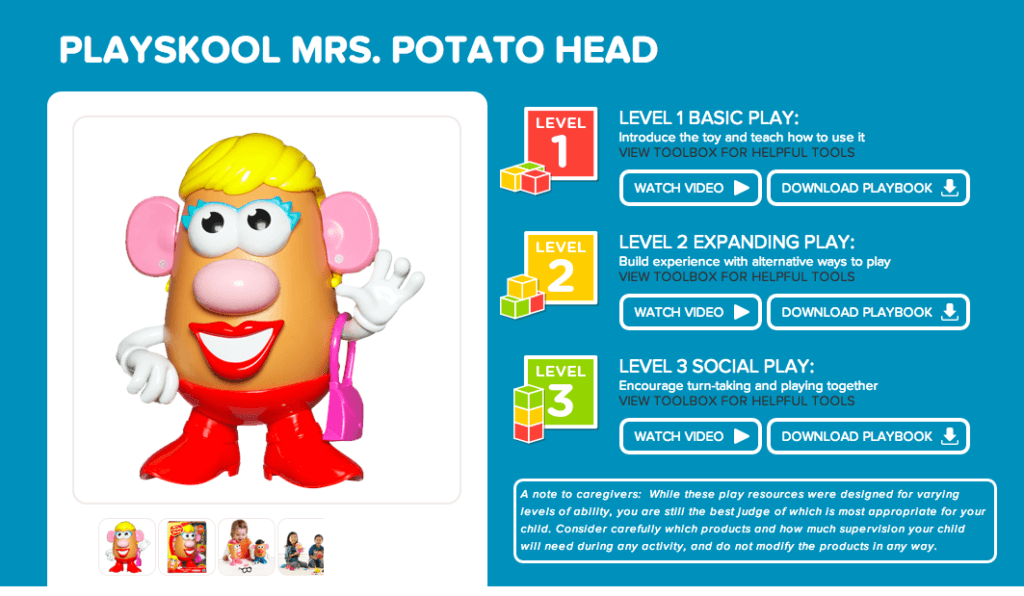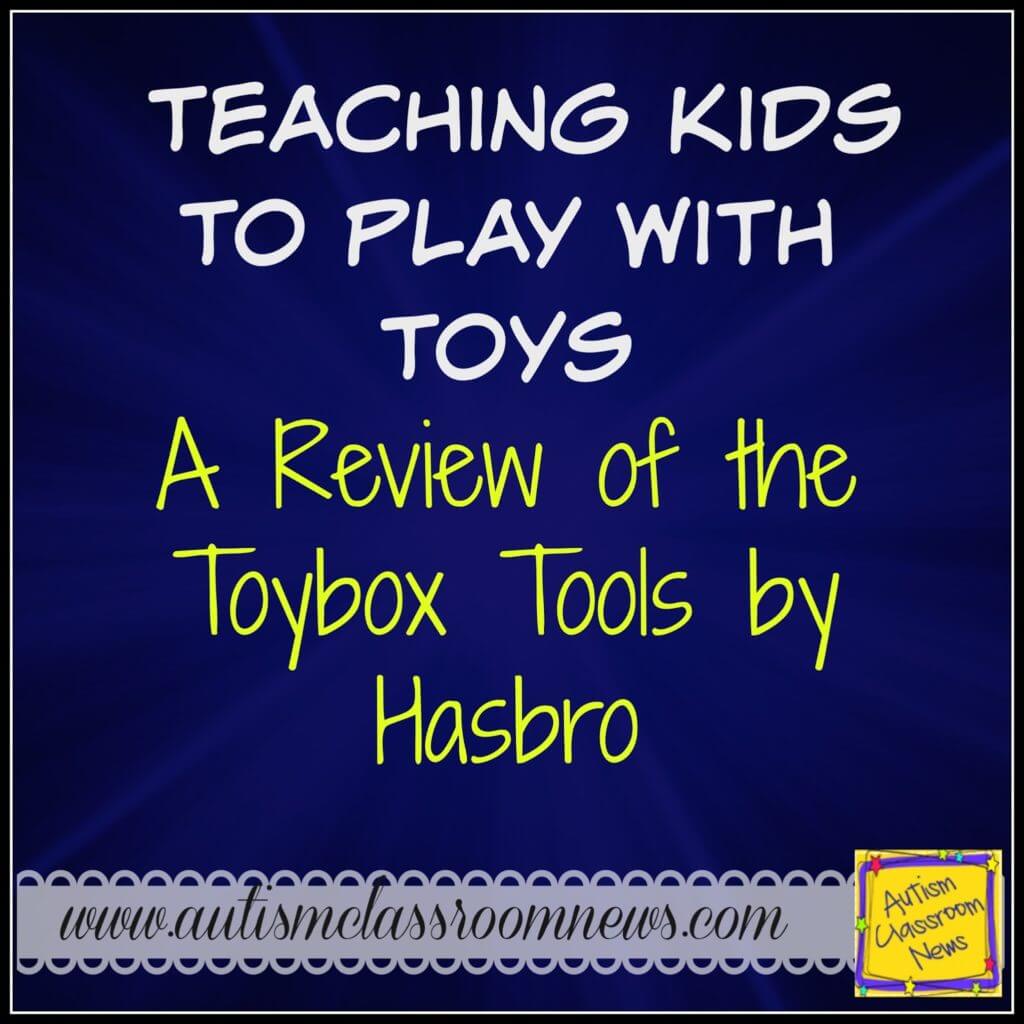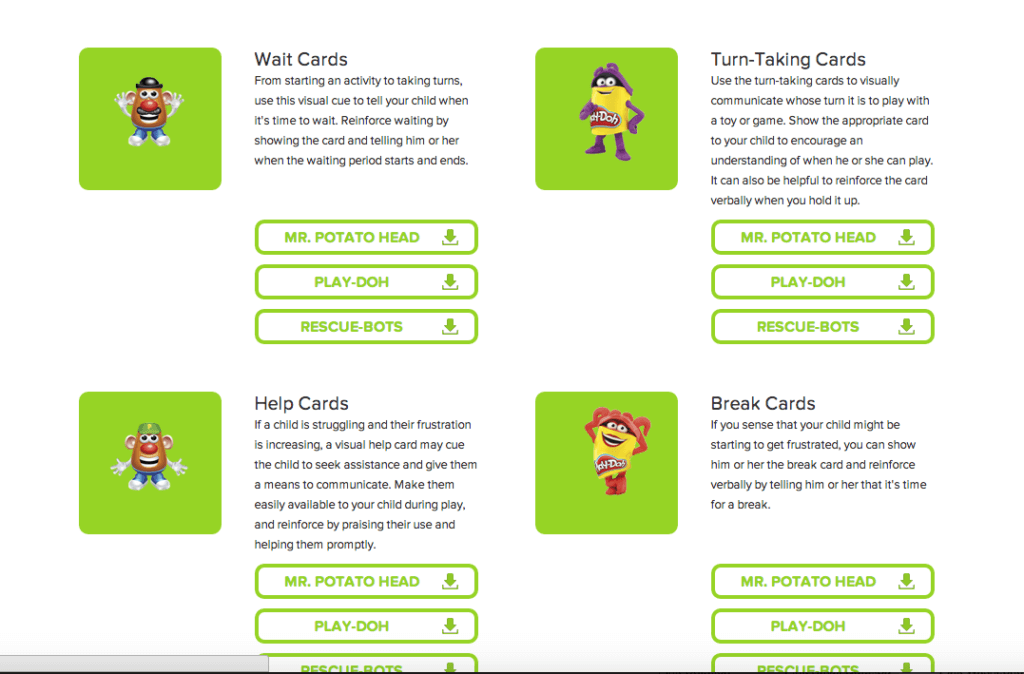Wow, I can’t believe that winter break is over for most of us! Time for back to reality. I really meant to do this post well before the holiday but reality factored in a bit with a few other responsibilities. However, I wanted to make sure that folks didn’t miss this amazing resource that is now available through Hasbro for teaching children (with autism as well as others who need assistance) to play with toys.
Let me be clear that Hasbro has not given or offered me anything to review their site. I happened to be present when they launched the program at the OCALICON in Ohio in November and was really excited by the idea. In looking at the site I’m even more excited by the possibilities. So, this is just a review to share with you the FREE resources available through the site and highlight some of the things I like and things I hope to see in the future from the group.
At OCALICON, Hasbro and The Autism Project launched a site called Toybox Tools to help children who need more explicit instruction in learning to play with toys. As we know, our kids with autism really struggle with knowing how to play with toys and games appropriately. Some of our children with ASD are interested in toys but may not play with them in the conventional way. Sometimes this is OK when they invent new things to build with Legos. But sometimes the difficulty with play becomes problematic because that is how young children learn new information and learn to socialize and communicate with each other. Parents often talk about the child that they bought an amazing toy for only to find that the child had no idea what to do with it. For more about the importance of play in development, check out this post from PlaytoLearn Preschool. For some awesome suggestions and ideas for supporting play in young children with communication difficulties, see this post by Considerate Classroom. But wait–check them out after I show you what the tools site has to offer.
Differentiated Levels
We know that children with ASD have different levels of play skills all across the spectrum. The Toybox Tools site was developed as a way to help children play with toys from learning the basics of how a toy works to how to interact with toys in social situations, like playing a game. There are 3 levels for each toy. The first level “basic play” teaches basically how the toy works. The second, expanded play, is a bit more advanced. The third focuses on “social play” and how to use the toy in more social and possibly pretend situations, like playing with Mr. and Mrs. Potato Head. So, there is something for everyone in the younger set to learn.
 Use of Video Modeling
Use of Video Modeling
Each level for each toy has a video of using the toy. You can use the videos as a video model to show your child how to play with the toy, how to act out the pretend sequence, or how to transform the robot. The videos are slow enough that the child is going to be able to follow it and laid out well with clearly defined steps. We know that video modeling works very well for many of our children, particularly for play, and that it works well in part because the kids can watch it repeatedly and pause it and rewind it. For more on video modeling, check out this post.
Use of Visuals
In addition to a video, there is also a set of photo steps that follow the same sequence as the video. It essentially has a script from the video and provides static pictures. In addition to pictures supporting the play with that specific toy, the site also provides visual supports to help support play in general, like first-then cards, turn-taking visuals, countdown timers, help cards, wait cards and break cards. These are all provided with the toy theme as well for those kids who get excited about a toy.
The site also provides additional supports for playing with the toys that you can download and print like play mats that support the play in the video.
The Toys
Currently the site focuses on 8 toys, but they are working to include more. Right now they have supports for the following toys: Playdough Animal Duffle Bag, Playdough Dr. Drill and Fill, Heatwave Rescue Robot, Classic Mrs. Potato Head, Mr. Potato Head Silly Suitcase, Elefun Busy Ball Popper, and the games Trouble and Connect 4. The plan is for the number of toys with tools to expand over time.
One thing to be aware of is that some of the videos will require the use of both toys. For instance, I checked out the Mrs. Potato Head because I figured that was something that most classes would have, but the level 3 activity includes the Mr. Potato Head Silly Suitcase in addition to Mrs. Potato Head in order to complete the pretend play sequence. So, if you are looking to buy toys this would be a good site to check before you purchase to see if there are tools available. Clearly the toys have to be part of the Hasbro family but that includes a LOT of toys.
So, to conclude, I think this site has great potential for early educators and for families to easily provide supports for play to their young children who are learning to play with toys. If you don’t have the toys, it might make a great Donors Choose grant proposal to purchase the toys that already have the supports in place. To me the availability of the video modeling is a huge plus because of the time that takes to get it right and edit it just right.
So, check out the site and I’m really interested in your thoughts about the tools.
Wednesday will be our first Workbasket Wednesday post of the new year, so get ready to link up for some work box fun!
Until next time,








![Summer resources to help survive the end of the year in special education [picture-interactive books with summer themes]](https://autismclassroomresources.com/wp-content/uploads/2018/05/SUMMER-RESOURCES-ROUNDUP-FEATURE-8528-768x768.jpg)
